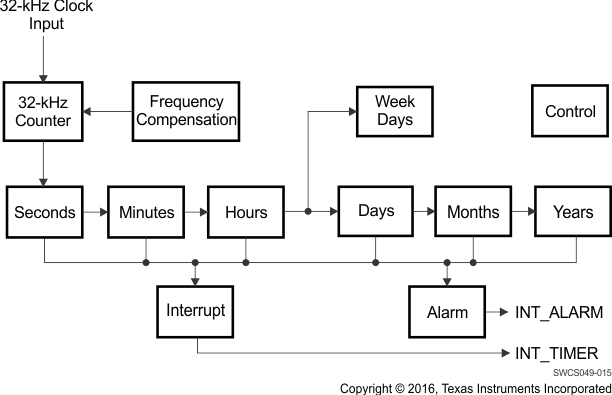ZHCSI09S June 2010 – August 2018 TPS65911
PRODUCTION DATA.
- 1器件概述
- 2修订历史记录
- 3Device Comparison Table
- 4Pin Configuration and Functions
-
5Specifications
- 5.1 Absolute Maximum Ratings
- 5.2 ESD Ratings
- 5.3 Recommended Operating Conditions
- 5.4 Thermal Information
- 5.5 Electrical Characteristics: I/O Pullup and Pulldown
- 5.6 Electrical Characteristics: Digital I/O Voltage
- 5.7 Electrical Characteristics: Power Consumption
- 5.8 Electrical Characteristics: Power References and Thresholds
- 5.9 Electrical Characteristics: Thermal Monitoring and Shutdown
- 5.10 Electrical Characteristics: 32-kHz RTC Clock
- 5.11 Electrical Characteristics: Backup Battery Charger
- 5.12 Electrical Characteristics: VRTC LDO
- 5.13 Electrical Characteristics: VIO SMPS
- 5.14 Electrical Characteristics: VDD1 SMPS
- 5.15 Electrical Characteristics: VDD2 SMPS
- 5.16 Electrical Characteristics: VDDCtrl SMPS
- 5.17 Electrical Characteristics: LDO1 and LDO2
- 5.18 Electrical Characteristics: LDO3 and LDO4
- 5.19 Electrical Characteristics: LDO5
- 5.20 Electrical Characteristics: LDO6, LDO7, and LDO8
- 5.21 Timing and Switching Characteristics
-
6Detailed Description
- 6.1 Overview
- 6.2 Functional Block Diagram
- 6.3 Power Reference
- 6.4 Power Resources
- 6.5 Embedded Power Controller (EPC)
- 6.6 PWM and LED Generators
- 6.7 Dynamic Voltage Frequency Scaling and Adaptive Voltage Scaling Operation
- 6.8 32-kHz RTC Clock
- 6.9 Real Time Clock (RTC)
- 6.10 Backup Battery Management
- 6.11 Backup Registers
- 6.12 I2C Interface
- 6.13 Thermal Monitoring and Shutdown
- 6.14 Interrupts
- 6.15 Register Maps
-
7Applications, Implementation, and Layout
- 7.1 Application Information
- 7.2 Typical Application
- 7.3 Power Supply Recommendations
- 8器件和文档支持
- 9机械、封装和可订购信息
6.9 Real Time Clock (RTC)
The RTC, which is driven by the 32-kHz clock, provides the alarm and timekeeping functions. The RTC is kept supplied when the device is in the OFF state or the BACKUP state.
The primary functions of the RTC block are:
- Time information (seconds/minutes/hours) directly in binary-coded decimal (BCD) format
- Calendar information (Day/Month/Year/Day of the week) directly in BCD code up to year 2099
- Programmable interrupts generation: The RTC can generate two interrupts: a timer interrupt RTC_PERIOD_IT periodically (1s/1m/1h/1d period) and an alarm interrupt RTC_ALARM_IT at a precise time of the day (alarm function). These interrupts are enabled using IT_ALARM and IT_TIMER control bits. Periodically interrupts can be masked during the SLEEP period to avoid host interruption and are automatically unmasked after SLEEP wakeup (using the IT_SLEEP_MASK_EN control bit).
- Oscillator frequency calibration and time correction
 Figure 6-5 RTC Digital Section Block Diagram
Figure 6-5 RTC Digital Section Block Diagram